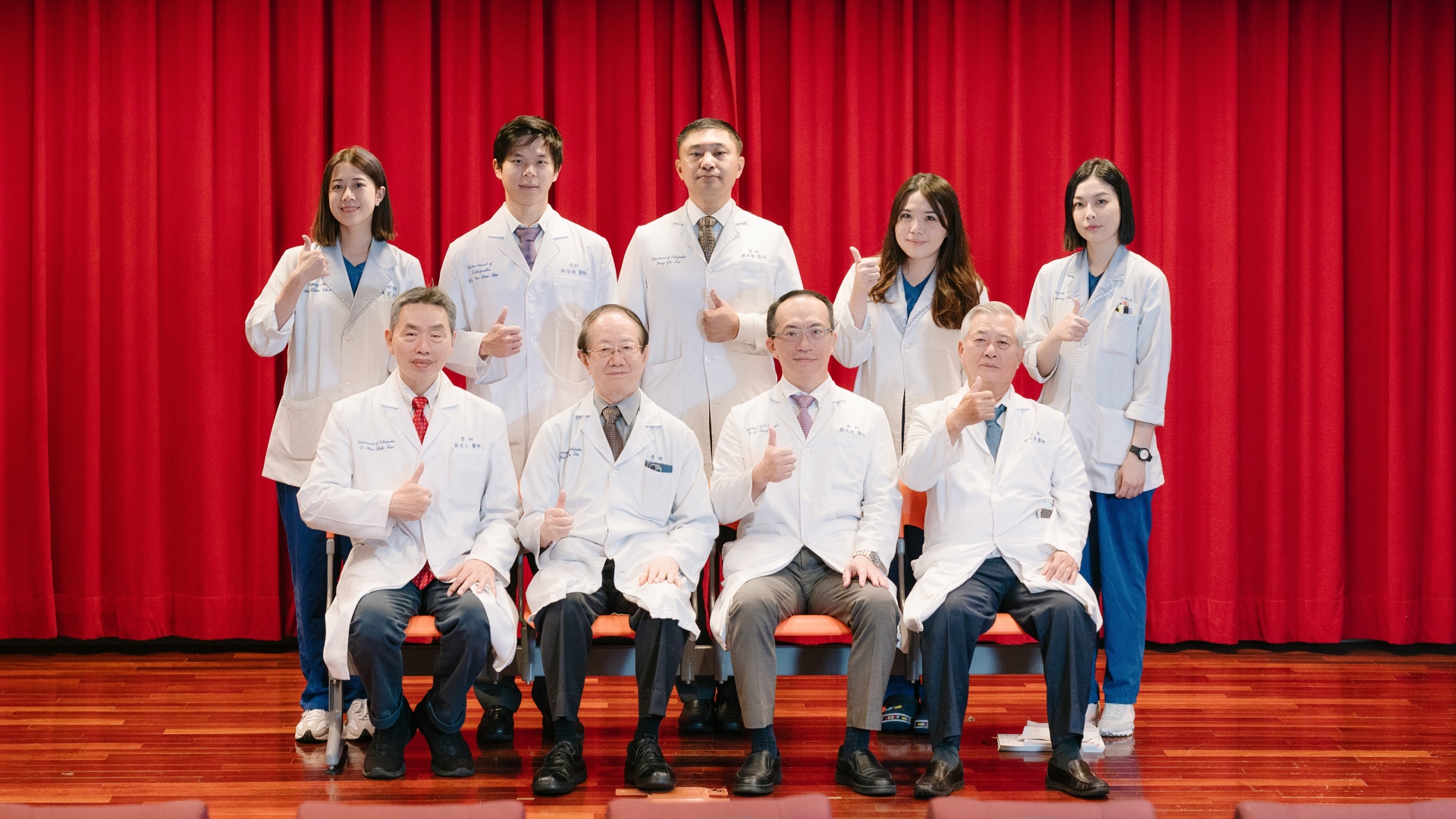
The Orthopedics at Taiwan Adventist Hospital aim at the treatment of the musculoskeletal system. Our physicians are dedicated to caring for you from head to toe, freedom from mobility limitations and pain relief, promote good posture, and treat of issues that have held you back. From neck injuries to foot and ankle pain, our experience orthopedists and staff are passionate about treating your condition and helping you recover completely.
The Hospital provides minimal invasive surgery, endoscopy surgery, microscopy examinations and related treatments. By using smaller incisions than traditional medical treatments, the surgery results in less bleeding, promoting rapid recovery, less expense and shorter hospital stays.
From the most invasive procedures to simple rehabilitation, there are many methods for dealing with pain, poor alignment, and deformities in the body. Bringing a high-level of expertise and experience to patients, our orthopedists complement each other with expertise in every aspect of orthopedic diagnosis, treatment, and care, so you can get back to the lifestyle you enjoy as quickly as possible.
Our experienced care team offers a full range of orthopedic services – backed by expertise and the latest innovations in material, technology and design – to help you move freely again, including:
Yes, you can consider this surgery if : Your knee joint(s) have been damaged by either progressive arthritis, trauma, or other rare destructive diseases of the joint. If there is increasing pain and stiffness not relieved by medications. If there is increasing difficulty to attain daily function.
Decisions regarding whether or when to undergo knee replacement surgery are not easy. The patient is better equipped to answer their own question if they know the risks, the benefits, and the likely post-operative results of TKR.
Risks of total knee replacement include blood clots in the legs that can travel to the lungs (pulmonary embolism). Pulmonary embolism can cause shortness of breath, chest pain, and even shock. Other risks include urinary tract infection, nausea and vomiting (usually related to pain medication), chronic knee pain and stiffness, bleeding into the knee joint, nerve damage, blood vessel injury, and infection of the knee which can require re-operation.
Furthermore, the risks of anesthesia include potential heart, lung, kidney, and liver damage.
Although you will be able to resume most activities, you should avoid activities that place excessive stress on the new knee.
Rearrange furniture so you can maneuver with a walker or crutches. Remove any thing that would cause you to slip and fall. (throw rugs) Fasten loose electrical cords where you expect to walk around Install a shower chair, gripping bar, and raised toilet (there are plastic Snap-on types available here).
Prepare assistive devices such as a long handle shoehorn. A grabbing tool or reacher so you won’t need to bend too far.
Early mobilization is important to counteract the effects of anesthesia and to encourage wound healing.
You will need to gradually develop your quadriceps muscle strength (which most likely have weakened from lack of activity due to knee pain before the surgery).
You may lose your appetite and feel nauseated or constipated for a couple of days. This is normal. You may be fitted with a urinary catheter during surgery to ease your post-operative care. The urinary catheter will usually be removed the next day. By then we expect the patient to be ambulating with a walker initially.
Your doctor will give you specific instructions on wound care, pain control, diet and exercise.
Pain management is important in your early recovery. Everyone’s tolerance to pain is different. Some will require an intravenous connection to regulate the amount of medication they need. No need to worry about being dependent on these medications as they will generally be stopped in a day or two.
Hospital stay may last from 3 to 7 days, depending on how well the patient heals after surgery.
Generally, we expect the following parameters before we consider discharging a patient:
Patient should be able to get in and out of bed independently
Patient should be able to bend the knee up to 90 degrees
Patient should be able to straighten the knee fully.
Patient should be able to walk on a level surface with crutches or walker.
Mild swelling is expected in the post-operative lower extremities for about 3 – 6 months. Elevate the legs often.
Keep the wound dry and clean.
Sutures will be removed 7 to 10 days after surgery.
Notify the doctor if your wound becomes red or begins to drain.
Calf pain, shortness of breath or chest pain are signs of a possible blood clot.
Notify your doctor if you have these symptoms.
Continue to do exercises for at least 2 months post surgery.
Try to achieve maximum range of motion of the knee. You can consider riding a stationary bicycle.
You can drive in a week or so if your left knee alone was replaced.
Avoid driving for 6 to 8 weeks if your right knee was replaced.
In both cases, we are assuming automatic transmission cars.
Sexual relations can be safely resumed in about 4 to 6 weeks after surgery.
Depending on the type of activities performed at work, it may take 6 to 8 weeks before the patient is able to go back to work.
Encouraged activities: walk as much as you like, but increase the distance gradually.
Swimming is recommended 6 to 8 weeks after surgery. Stationary biking is also recommended.
Acceptable activities: Golf (with spikeless shoes and a cart) , dancing and bicycling on level surfaces.
Avoid the following activities: tennis, badminton, contact sports, squash, racquetball, jumping, squats, skiing or jogging.
Do not do any heavy lifting (more than 40 pounds).


